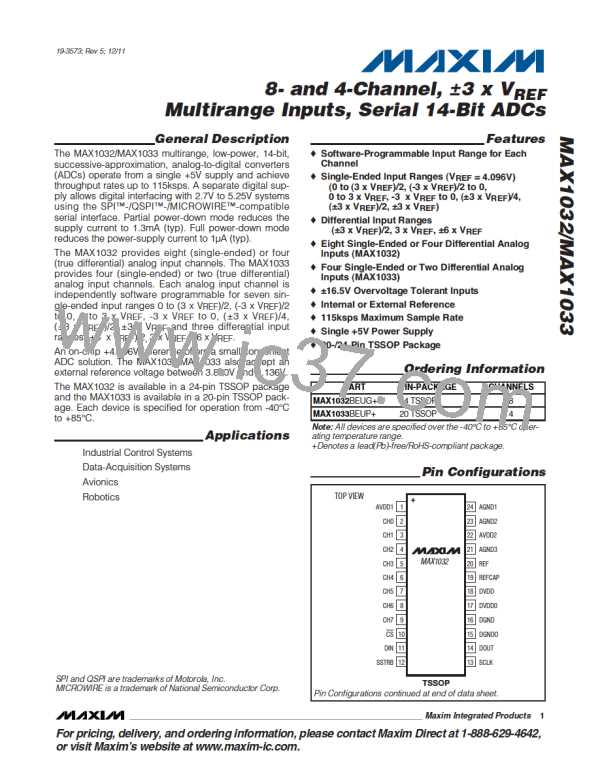8- and 4-Channel, 3 ꢀ ꢁREF
Multirange Inputs, Serial 14-Bit ADCs
2/MAX103
4–20mA INPUT
CH0
µC
250Ω
MAX1032
4–20mA INPUT
CH8
250Ω
Figure 19. 4–20mA Application
LOW-OFFSET
DIFFERENTIAL
AMPLIFIER
CH0
CH1
µP
MAX1032
MAX1033
REF
BRIDGE
Figure 20. Bridge Application
Differential Nonlinearity (DNL)
DNL is the difference between an actual step width and
the ideal value of 1 LSB. A DNL error specification of
greater than -1 LSB guarantees no missing codes and
a monotonic transfer function.
Channel-to-Channel Isolation
Channel-to-channel isolation indicates how well each
analog input is isolated from the others. The channel-to-
channel isolation for these devices is measured by
applying a near full-scale magnitude 5kHz sine wave to
the selected analog input channel while applying an
equal magnitude sine wave of a different frequency to
all unselected channels. An FFT of the selected chan-
nel output is used to determine the ratio of the magni-
tudes of the signal applied to the unselected channels
and the 5kHz signal applied to the selected analog
input channel. This ratio is reported, in dB, as channel-
to-channel isolation.
Transition Noise
Transition noise is the amount of noise that appears at a
code transition on the ADC transfer function. Conversions
performed with the analog input right at the code transi-
tion can result in code flickering in the LSBs.
______________________________________________________________________________________ 27

 MAXIM [ MAXIM INTEGRATED PRODUCTS ]
MAXIM [ MAXIM INTEGRATED PRODUCTS ]